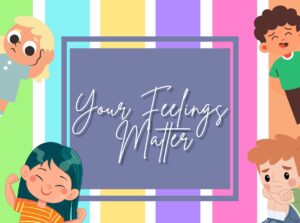Flashcards
Emotion flashcards can be incredibly useful for teaching children for several reasons:
Emotional Intelligence Development:
Emotion flashcards help children recognize and understand different emotions, both in themselves and in others.
This awareness is crucial for developing emotional intelligence, which is essential for healthy social and emotional development.
Communication Skills:
By learning to identify emotions using flashcards, children can better communicate their own feelings to others.
This ability to articulate emotions fosters better understanding and empathy in interpersonal relationships.
Conflict Resolution:
When children can recognize their own emotions and understand the emotions of others, they are better equipped to navigate conflicts and resolve them constructively.
Emotion flashcards provide a visual aid that facilitates discussions about feelings and helps children express themselves more effectively.
Self-Regulation:
Teaching children about emotions through flashcards empowers them to regulate their own emotions.
By recognizing when they are feeling angry, sad, or frustrated, children can learn coping strategies to manage these emotions in a healthy way.
Empathy Building: Exposure to a variety of emotions through flashcards helps children develop empathy by understanding that others may experience different feelings than they do.
This understanding lays the foundation for compassion and kindness towards others.
Early Intervention:
Emotion flashcards can be particularly beneficial for children who struggle with identifying or expressing their emotions.
Early intervention through these tools can prevent difficulties in social interactions and emotional regulation later in life.
Overall, emotion flashcards provide a fun and interactive way for children to learn about their feelings and the feelings of others, laying a strong foundation for healthy emotional development.
This set of emotion flashcards includes;
Happy, sad, angry, sleepy, sick, scared, confused, silly, embarrassed, hungry, and thirsty.

How To Use:
There are various ways in which you can use this flashcard set.
You may want to decorate your classroom, or child’s room with these brightly colored flashcards.
Or you may want to focus on listening and repeating techniques for your young learner to grasp these vocabulary words.
Repetition is a fundamental aspect of many learning strategies, especially for young children who benefit from frequent exposure to new information. This reinforces learning and memory retention.
There are also many great flashcard games you can play using this flashcard set.
Memory Match:
Lay out pairs of flashcards face down in a grid. Children take turns flipping over two cards at a time, trying to find matching pairs. If they find a match, they keep the cards and take another turn. The player with the most pairs at the end wins.
Race Against Time:
Set a timer and challenge children to go through as many flashcards as they can before time runs out. They can earn points for each correct answer. This game adds an element of excitement and urgency to learning.
Charades:
A classic favorite. Choose a few flashcards. Without showing the card, one child acts out the emotion flashcard while the others guess what it is. This game encourages creativity and communication skills.
Treasure Hunt:
*Best when printed small sized*
Hide flashcards around the room. Children search for the cards and, once found, must identify the content or answer a question related to the flashcard. This game combines physical activity with learning.



